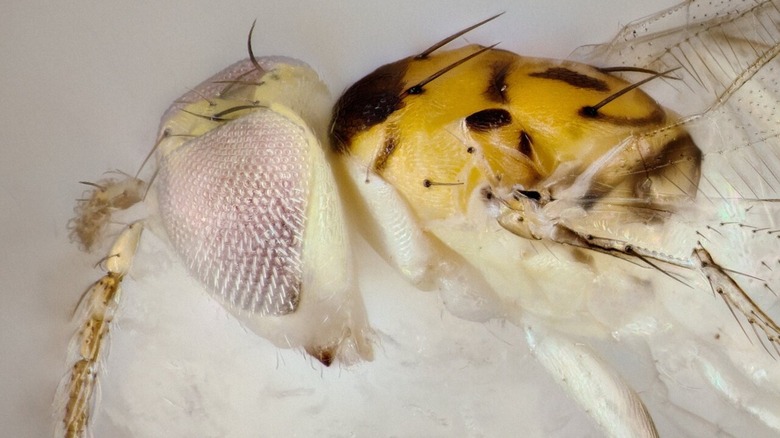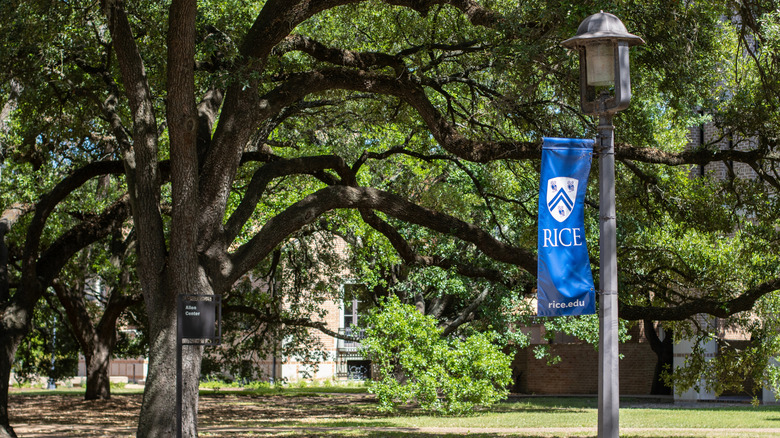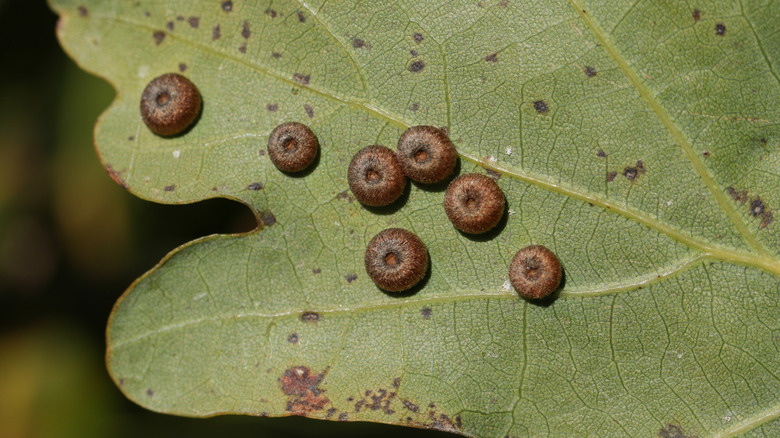Scientists In Texas Found A New Species Hiding Under Their Noses
There are more than 2 million animal and plant species currently known to science, but in all likelihood, this number is just the tip of the iceberg. In fact, a 2011 study published in the journal PLOS Biology estimated that the real number of species on Earth is likely around 8.7 million, four times what we have classified thus far. Every year, scientists identify thousands more species, inching towards a full picture of life on Earth. 2024 brought some truly incredible animal discoveries, including one that had been flying right under scientists' noses at one of the most prominent research universities in Texas.
Over the past decade, Rice University in Houston has gained a reputation as a hotbed of insect discoveries thanks to the work of a research team led by biology professor Scott Egan. Since 2014, Egan and his team have identified 18 previously unknown species on the university's campus, proving that sometimes life's most surprising discoveries come from your own backyard. Their most recent find is Chrysonotomyia susbelli, a type of wasp that is only a millimeter in size. It's the fourth wasp species discovered at Rice in the past seven years, and it might be the most shocking one yet.
How Chrysonotomyia susbelli was discovered
Rice University's campus is home to more than 2,000 live oak trees, which create a welcoming habitat for several species. Senior Rice student Brendan O'Loughlin was walking past some of these trees one day when he caught sight of some tiny yellow dots buzzing between the leaves. Professor Egan's team had previously identified similarly small wasp species, but these ones had a clearly different color. O'Loughlin managed to capture a few of them and observed them under a microscope, revealing a unique pattern of dark speckles on the golden body. He immediately suspected he'd made a new discovery, but he needed more proof to be certain.
O'Loughlin teamed up with Egan and graduate student Pedro Brandão-Dias, who had previously made his own discovery of the Valhalla wasp species on Rice's campus just a few years earlier. They also sought help from Smithsonian entomologist and wasp expert Mike Gates. Together, the team conducted DNA analysis of the wasps, and observed their behavior in the wild. Their final conclusion, published in the journal ZooKeys, determined that the species was brand new to science.
As the original discoverer, O'Loughlin earned the honor of naming this newfound species. He noticed that the wasp's colors matched those of Wiess College, his resident college at Rice. Wiess's mascot is the war pig, a term that translates to Latin as "susbelli". Thus, C. susbelli was chosen as a subtle nod to the school.
These wasps don't sting, but they do something even scarier
Professor Egan specializes in the study of gall wasps from the family Cynipidae, which contains around 1,300 members. Gall wasps have a complete metamorphosis life cycle, meaning they begin life as larvae, but the way they raise their larvae is truly bizarre. Female gall wasps inject their eggs into plant tissue, most commonly oaks and roses. When the eggs hatch, the emerging larvae secrete a substance that causes the plant's cells to grow out of control, forming a tumor-like growth called a gall. The gall serves as a shelter for the larvae as they mature and pupate, feeding off the plant. However, galls do not deal long-term damage to the plants they grow on.
C. susbelli is not a gall wasp itself, but it has a unique relationship with gall wasps never before seen in any animal. C. susbelli is a sinister parasite, which kills and eats cynipid gall wasps before injecting its own eggs into the gall for its larvae to mature in. This makes C. susbelli the only member of its genus ever known to attack gall wasps. The research team also noticed that females of the species engage in a unique behavior where they zigzag along leaves, searching for galls to invade.
There is so much research still to do on C. susbelli. At this point, scientists haven't even found them outside of the Rice campus, but who knows? More could even be hiding right in your own backyard.


